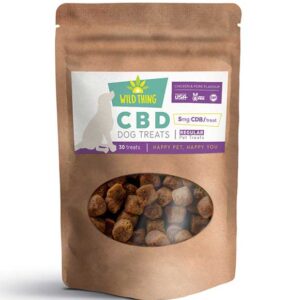Dermatitis in dogs is quite simply a form of skin irritation or inflammation associated with allergies.
Atopic Dermatitis is the most common skin disease found in dogs, causing constant itching and scratching. If your dog is only scratching, it’s likely only a mild case of Dermatitis. More severe cases can produce hot spots and swelling and can even give off a foul odor. Unfortunately, the cause of Dermatitis is unknown and its effects can be very annoying if your dog is suffering from it. Dogs showing signs of Dermatitis are usually between the age of three months and six years old.
Ailment Guides:
Cancer In Cats
Irritable Bowel Syndrome In Dogs
Common Digestive Problems In Cats
What is Dermatitis in Dogs?
types of canine dermatitis
Atopic Dermatitis
A degenerative heart disease and the most common type of heart disease in dogs. It is caused by the breakdown of the valves of the heart. A leaky valve reduces the amount of blood pumped through a dog’s body. Valvular heart disease is more commonly found in smaller breed dogs over five years of age.
Contact Dermatitis
You guessed it, this is caused when the dog comes in contact with an irritant. Something as simple as their collar rubbing on their neck or rolling in freshly cut grass.
Pyotraumatic Dermatitis
A dog’s skin cannot properly heal if they are always licking and scratching at it. This causes Pyotraumatic Dermatitis which is an overgrowth of bacteria commonly called a hot spot.
Flea Allergy Dermatitis
Simply a dog’s allergic reaction to fleas and flea bites.
Sarcoptic Mange
Usually visible on a dogs ears, belly or chest, it’s caused by the Sarcoptic mite.
Acral Lick Dermatitis
Dogs suffering from this type of Dermatitis will constantly lick at their paws or legs. Excessive licking causes irritation and wounds on a dogs extremities.
Causes of dermatitis in dogs
Age, size and breed are all factors when it comes to dogs developing dermatitis.
As mentioned earlier, the cause of Dermatitis in dogs is unknown. What is known is that it’s a genetic disease, which means some breeds are more likely to develop Dermititis. Some breeds that commonly suffer from it include:
- Boxer
- English bulldog
- French bulldog
- Labrador
- Golden Retriever
- Jack Russell
- Shar-pei
- Yorkshire
Because Dermatitis in dogs has a genetic characteristic, the triggers for every dog will vary. If it could irritate your dogs skin, it could trigger Dermatitis. Common triggers include:
- Excess rubbing of the skin
- Tumors,cysts or bruises
- Skin allergies
- Airborne pollens
- Malnutrition
- Canine acne
- Yeasts or fungi
- Allergies to food
symptoms of dermatitis:
Symptoms of Dermatitis in dogs appear in many different places on their body, but the most commonly affected areas are:
- Ears
- Wrists
- Ankles
- Muzzle
- Underarms
- Groin
- Around the eyes
- In between the toes
Itching and licking are not the only signs of Dermatitis in dogs. Keep an eye out for one or more of the following:
- Agitation
- Dandruff
- Scabs and wounds
- Redness
- Dry skin
- Alterations of the coat
- Chewing paws or hind-quarters
- Excessive periods of scratching/biting
- Rubbing on furniture, rugs, etc
- Hair loss or excessive shedding
- Greasy fur
- Discolored saliva (reddish/brownish)
- Redness or enflamed areas of the body
Learn More:
Cbd Is Here To Chill Out Anxious Pets Whether They Want It Or Not
Tips On Using Cbd Oil To Treat Your Pets
What Type Of Animals Can Benefit From Cbd Oil
Seasons Change, and So Does Your Dog's Skin
Symptoms associated with dermatitis often worsen depending on the season. For example, in the Spring there is more pollen and dust in the air than in summer. As a result, your dog will scratch, rub or lick constantly. However, even if it’s “out of season” for things like pollen, stinging nettle or other environmental factors for increased itchiness, pay close attention to your dog’s overall behavior. Sometimes your canine can be suffering from dermatitis without exhibiting the typical symptoms of itching or biting – things like hair loss, greasy coats, or strange behavior such as leaning or rubbing on fixtures can be a giveaway.
CBD Can Help Your Dog’s Dermatitis
CBD – or Cannabidiol – can be very effective at treating dermatitis or skin & coat conditions.
Cannabidiol (CBD) can be very beneficial for maintaining your dog’s immune system, cardiovascular system and overall vitality. CBD helps to lessen the effects of lethargy, gastrointestinal issues and reduces anxiety, aggression and stress-related disorders.
CBD can be ingested, taken under the tongue, or applied topically to the affected areas. One of the most beneficial components of CBD is that it does not irritate the skin or cause any hallucinogenic effects. When introduced topically, CBD can soothe irritation, inflammation and reduce pain associated with dermatitis. Cannabidiol is particularly effective because of its anti-inflammatory properties – something that is critical to easing pain & discomfort from dermatitis.
Cannabidiol is a phytocannabinoid that has been shown to have a prominent effect on numerous ailments – including epilepsy, arthritis and cancer. Remedies containing CBD achieve this by interacting with your dog’s endocannabinoid system. Almost all animals, like people, have an endocannabinoid system; this network of neurotransmitters is integral to physiological processes like memory, mood, pain, stress and appetite.
This complex biosystem is very prevalent in dogs in comparison to other species. Canines have a high concentration of CB1 & CB2 receptors in their brainstem. CB1 receptors affect the brain, lungs, vascular system and muscles, gastrointestinal function; whereas, CB2 receptors are linked to bones, skin spleen and glial cells. In combination, CB1-CB2 collaborate in influencing the overall immune system, liver, kidneys, bone marrow, pancreas and brainstem.
CBD can help your dog by producing anti-inflammatory, anti-anxiety, antipsychotic, antispasmodic and analgesic effects indirectly – that is, CBD interacts with your dog’s ECS (Endocannabinoid System) opposite to THC which directly binds to the Cannabinoid Receptors of the body. This does two things: makes the positive remedial properties more bioavailable to your dog; and lessens or negates the psychoactive effects, such as those associated with THC ingestion.
Try CBD for dermatitis in your dog as a supplementary remedy to their medications. CBD can help them to feel comfortable, at-ease, or just provide an extra layer of relief from the itching & scratching.
Ailment Guides:
Gallstones In Dogs
Gastrointestinal Disease In Dogs
Canine Anxiety









